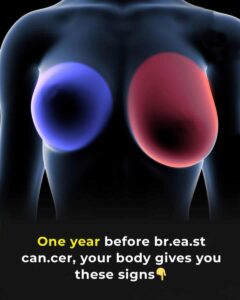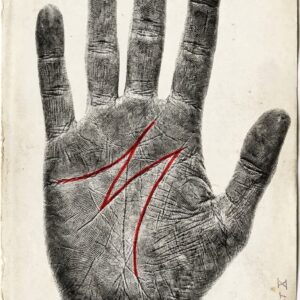Breast cancer is one of the most common types of cancer among women worldwide, and early detection can make the difference between successful treatment and serious complications.
Studies show that the body can begin sending warning signals up to a year before the disease fully develops — but many women either overlook them or mistake them for normal changes.
Paying attention to these early signs is essential for taking timely action and protecting your health.

Changes in Breast Shape or Size
One of the first signs may be a change in the shape or size of the breast. If you notice that one breast appears larger, smaller, or slightly drooping compared to the other, it’s important not to ignore it. These subtle differences can easily go unnoticed, but examining the area and consulting a specialist can help identify problems in their earliest stages.
Skin Texture Changes: The “Orange Peel” Effect
Another significant warning sign is skin that looks dimpled or reddened — a condition known as “peau d’orange,” or “orange peel skin.” This occurs when inflammation or thickening of the tissue under the skin alters its texture. While it might seem like a cosmetic issue, this change requires immediate medical attention, as it could indicate an underlying condition.
Nipple Changes and Discharge
The nipple can also reveal early warning signs. If you notice it has suddenly become inverted or retracted, or if there’s any discharge — especially with traces of blood — it’s crucial to see a breast specialist or gynecologist right away. Changes in the nipple, particularly when combined with other symptoms, can be key indicators for early detection of breast cancer.
Lumps or Swelling in the Armpit
The appearance of a lump or swollen lymph node in the armpit can also be an early sign that many women overlook. While swollen glands are often the result of infections or minor inflammation, a persistent lump in this area may suggest the presence of malignant cells. A medical exam or imaging test is necessary to determine the cause.
The Importance of Self-Exams and Screenings
Experts recommend performing a monthly self-exam to become familiar with the normal look and feel of your breasts, making it easier to detect any unusual changes. In addition, international health guidelines suggest that women over 40 have a mammogram every one to two years, depending on family history and individual risk factors.
Early Detection Saves Lives
Detecting breast cancer in its early stages greatly increases the chances of successful treatment — and can save lives. Education and awareness are essential tools for prevention, so sharing this information with family and friends can make a real difference.
It’s important to remember that this information is for educational purposes only and does not replace a professional medical evaluation. If you notice any changes in your breasts or body, consult your gynecologist or breast specialist as soon as possible. Acting early can make all the difference, offering more treatment options and better chances for recovery.
Stay Alert and Take Action
Being proactive, scheduling regular check-ups, and responding to the first signs can be the key to protecting your health and the health of those you love. Recognizing early symptoms doesn’t just save lives — it empowers you to face the disease with greater confidence and better outcomes.





